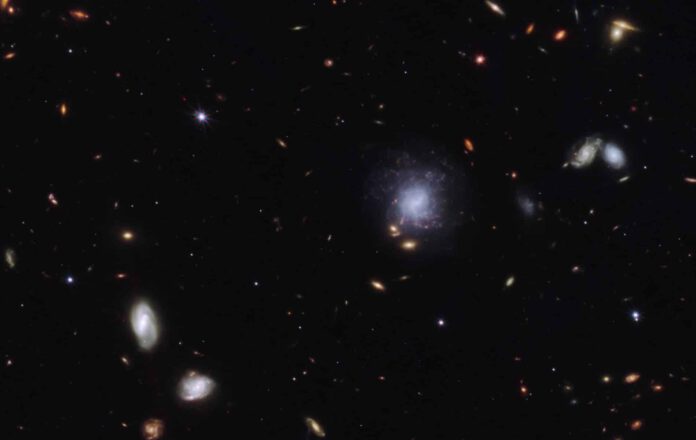
The Origins of Crucial Chemical Elements
Our existence hinges on specific chemical elements. Observations made with the James Webb Space Telescope have shed light on the likely origins of some of these fundamental elements.
The telescopic observations indicate that these particular elements are formed in a rather spectacular manner: during heavy explosions in space. This fascinating discovery was reported in the scientific journal, Nature.
Colliding Neutron Stars
Scientists were able to reach these conclusions by observing such heavy explosions using earth-based and space-based telescopes, including James Webb. The explosion was most likely the result of a collision between two neutron stars, accompanied by one of the brightest gamma-ray bursts ever witnessed. Researcher Ben Gompertz explains, “Gamma-ray bursts are created by powerful jet streams that travel nearly at the speed of light. In this case, the jet streams were ignited by the collision of two neutron stars which had been spiraling towards each other for billions of years. They collided to produce the gamma burst we observed in March this year.”
Tellurium and Iodine
With the help of various telescopes, scientists observed the aftermath of this explosion. They discovered the heavy element Tellurium, along with several other heavy elements located close to Tellurium in the periodic table, likely created during the explosion. This includes Iodine, an essential element for life as we know it, and Thorium which might have been brought into existence due to the explosion.
Evidence was Hard to Find
For some time, scientists have suspected that merging neutron stars offer the ideal environment for the creation of rare elements significantly heavier than iron. Proof, however, was elusive. Firstly, kilonovas – the name given to the explosions resulting from two neutron stars merging – are quite rare, making it challenging to witness one. Additionally, the gamma-ray bursts which can occur during such an explosion, typically last less than two seconds, providing a narrow window of observation.
A Long Burst
But in March of this year, scientists were in luck. The collision of two neutron stars not only resulted in an extraordinarily bright gamma-ray burst but one that lasted remarkably longer than usual. The burst, named GRB 230307A, sustained for about 200 seconds. Following the initial detection of the gamma-ray burst, astronomers immediately pointed a wide range of telescopes, including James Webb, towards it. With the incredibly sensitive infrared telescope, researchers managed to determine the location of the heavy explosion and study its aftermath in detail. Thanks to the James Webb, scientists can now conclude that Tellurium – an element rarer on Earth than platinum – is produced by colliding neutron stars. Hints of other elements, such as rare earth metals, were also observed.
Thanks to Webb
“There are only a handful of kilonovas known to us and this is the first time we’ve been able to look at the aftermath of a kilonova with the James Webb Space Telescope,” says researcher Andrew Levan. “Over 150 years after Dmitri Mendeleev drafted the periodic table, we are finally able to fill in some of the missing information about the origins of certain elements, all thanks to the James Webb Telescope.” Fellow researcher Samantha Oates adds, “Discovery of this sort would have been unfathomable just a few years ago. But with the help of the James Webb Space Telescope, we can observe these neutron star fusions in incredible detail.”
Naturally, these observations are invaluable. But even more is expected to unfold. Astronomers promise, “Until recently, we believed that fusions between neutron stars could not power gamma bursts for more than 2 seconds,” notes Gompertz. “Our next task is to find more of these long-lasting bursts, gain a clearer understanding of the driving forces behind them and determine if they might produce even heavier elements.”











